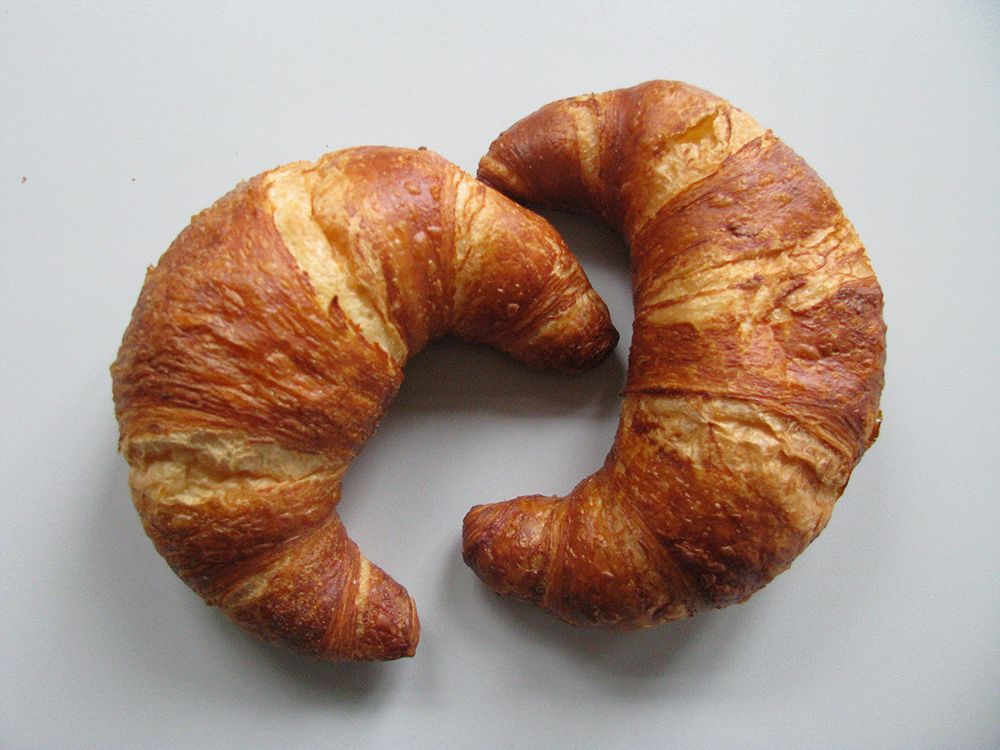Crescent Bread in the Crescent City
There's nothing more European than relaxing at an outdoor café table while enjoying a cup of coffee with a freshly baked pastry on the side.
While New Orleans, aka America's most European city, has the famous and delicious pairing of café au lait and beignets, the Big Easy wouldn't even have that claim to fame if not for France and the country's obsession with baked goods. In addition to beignets, baguettes, and so much more, nothing quite screams française quite like the iconic croissant.

A croissant, easily recognized by its distinctive crescent shape, is bread that is made from French yeast-leavened laminated dough, which is layered with butter and then rolled and folded multiple times to make it fluffy and flaky. Despite looking relatively simple, croissants are internationally renowned and can be found in most any bakery, patisserie, and café around the world.
Kipferl
For something so synonymous with France, croissants are actually heavily inspired by an Austrian baked good called a kipferl, which has the same crescent shape but is made using heavier wheat flour dough. This version of the pastry has been made in Austria since the 13th century and can be found all over Central Europe in countries including Hungary, Croatia, and Slovakia, most likely due to Austria's influence as a former major European empire
The kipferl's crescent shape actually has a few interesting origin myths surrounding it. Pastries and breads made to look like crescents have been served as far back as Ancient Greece to honor Selene, who was the goddess of the moon in Greek myth.
For the kipferl specifically, it's claimed that the shape was made to honor Christian forces who were able to fend off an army of invading Ottoman Turks from capturing Vienna in 1683. According to legend, a baker who was working throughout the night heard faint rumbling noises coming from underground his shop. When he went to investigate, he discovered it was actually Turks who were tunneling under the city's walls to invade it from the inside. Once the word got out, the tunnel was blown up to trap the Turks inside. As a reward for his actions, the baker asked for exclusive rights to bake a crescent-shaped pastry to commemorate the incident, basing it off the Islamic star and crescent symbol that appeared on the Ottoman Empire's flag.
This story is pretty dubious since the kipferl had been present in Austria for a few centuries before the story supposedly took place, and there's also a Hungarian version of the legend that claims that same exact version of events happened in 1686, when the Turks attacked Budapest. However, the legend remains popular and widespread enough so that, in 2013, Syrian rebels banned croissants and other related pastries in Aleppo on the supposed basis that they celebrate European victory over Muslims.
Croissant
How the kipferl came to become the croissant is far less fantastical. In either 1838 or 1839, an Austrian artillery officer named August Zang opened a Viennese bakery, named Boulangerie Viennoise, in Paris. Specializing in not only kipferls but also Vienna loaves and more, the bakery quickly became a hit with Parisians. It became so popular that imitators started doing their own style of kipferls, thus officially giving birth to French-style croissants.
With France's long and storied presence on the world stage, as well as developing chains that sell factory-made, mass-produced croissants in the 1970s, the French version of this pastry has become the most immediately recognizable around the world. So it makes sense that a deeply French-rooted city like New Orleans has plenty of locations where folks can pick up different varieties of croissants.
One of the best places around NOLA to grab some croissants and baked goods in general, is La Boulangerie on Magazine Street. This bakery serves a truly large variety of both sweet croissants like cinnamon walnut churro and bread pudding to savory croissants such as the quiche Lorraine and cheese straws. For anyone on or traveling to the Westbank, you'll find very good croissant options at both Hi Do Bakery in Terrytown and Amore Bakery and Café in Old Gretna. There are so many great places in the city for croissants that it's almost impossible to list them all.
With a cup of coffee in one hand and a croissant in the other, you can easily experience the Parisian, or even Austrian, way of life right here in the Crescent City.

